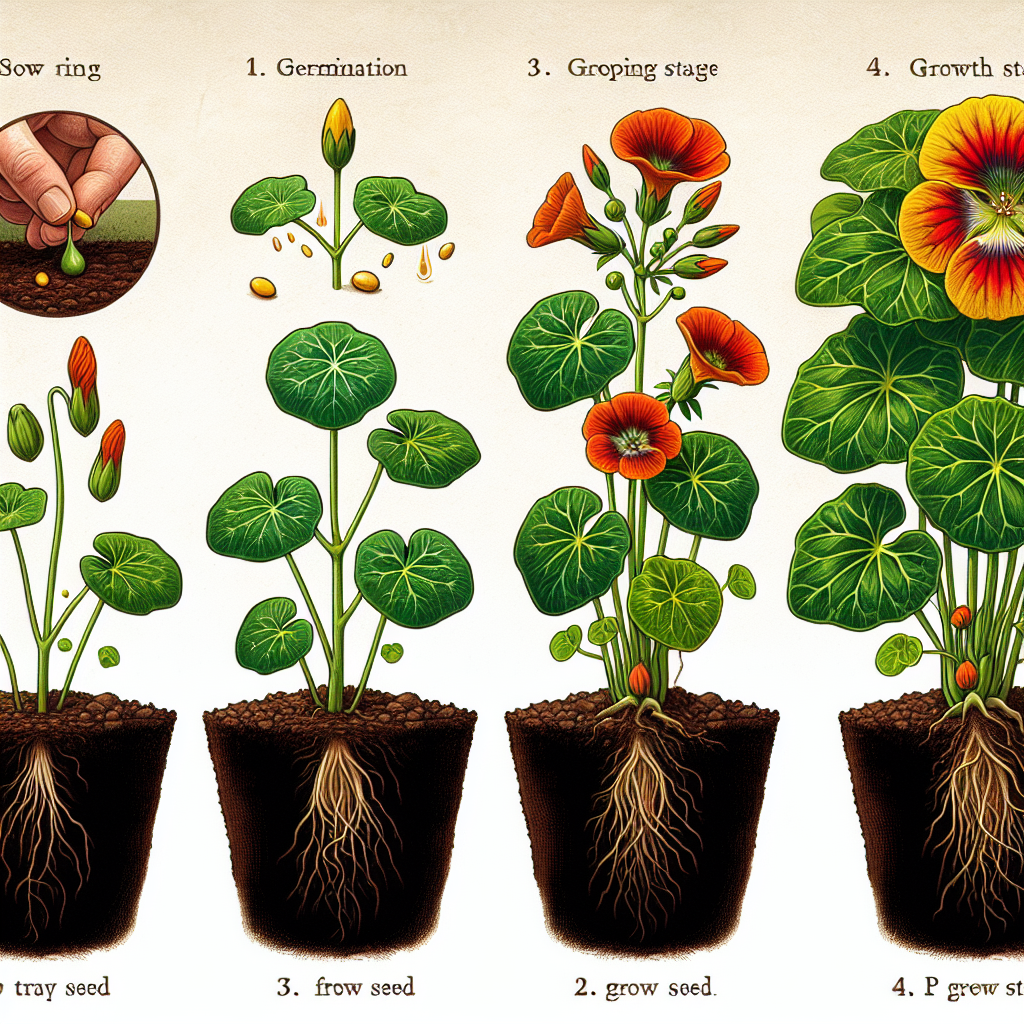
How to grow nasturtium from seed
A Comprehensive Guide on Growing Nasturtium from Seed
Nasturtium (Tropaeolum majus) is a vibrant and hardy annual flower that adds a splash of color to any garden. Not only are they visually appealing, but they are also easy to grow and maintain, making them a perfect choice for both novice and experienced gardeners. In this guide, we’ll explore the essential steps and tips on how to grow nasturtium from seed, ensuring a bountiful blooming season in your garden.
Understanding Nasturtiums
Nasturtiums are renowned for their unique blossoms and culinary uses. With vibrant shades of orange, yellow, and red, these flowers can grow in various conditions and are particularly resilient. One of the best aspects of nasturtiums is their ability to attract pollinators, making them excellent companions for other plants in your garden.
Choosing the Right Seeds
When considering how to grow nasturtium from seed, the first step is selecting the right variety. Nasturtiums come in a range of types, including:
- Trailing Varieties: Ideal for containers or hanging baskets.
- Dwarf Varieties: Compact plants perfect for small spaces and borders.
- Climbing Varieties: Suitable for trellises or fences, adding vertical interest.
Each of these varieties offers a unique aesthetic and growth habit, so choose according to your garden layout and personal preference.
Perfect Timing for Planting
Nasturtium seeds thrive in warmer climates, so timing your planting is crucial. They prefer to be sown directly outdoors after the last frost. Typically, this is in late spring, when soil temperatures reach around 60°F (15°C). However, for those who live in cooler regions, starting seeds indoors a few weeks prior can jumpstart the growing process.
Preparing the Soil
Nasturtiums are relatively undemanding when it comes to soil quality. However, it’s still essential to prepare the soil adequately:
- Choose well-draining soil enriched with organic matter.
- Ensure that the pH is between 6.5 and 7.5 for optimal growth.
Consider adding compost or aged manure to enhance soil quality. Avoid overly fertile soil, as it can lead to lush foliage with fewer flowers.
Sowing Seeds
Now that you've prepared your garden plot, it's time to sow the nasturtium seeds. Here’s a step-by-step breakdown:
- Make a Hole: Create small holes about 1 inch deep and 10 inches apart.
- Place Seeds: Drop 2-3 seeds into each hole.
- Cover Gently: Lightly cover the seeds with soil and water them gently.
- Label the Area: If you've planted different varieties, label each section for easy identification.
Caring for Your Nasturtiums
Caring for nasturtiums involves a few simple steps. Here’s how to ensure they thrive:
- Watering: Water the seeds lightly after sowing. Once plants are established, they are drought tolerant, so water only during prolonged dry spells.
- Weeding: Keep the area around your nasturtiums free from weeds, which can compete for nutrients.
- Fertilizing: These plants thrive in poor soil, so avoid heavy fertilization. A light application of plant food in mid-summer can support growth.
- Pest Control: Keep an eye out for pests such as aphids. A gentle spray of water can help remove them, or you can introduce beneficial insects like ladybugs.
What to Expect
After following the steps on how to grow nasturtium from seed, you should see sprouts appearing within 7-14 days. As they grow, here are some aspects to watch for:
- Height: Depending on the variety, nasturtiums can reach heights of 6-10 inches for dwarf types, while trailing and climbing varieties can reach much higher.
- Blooms: Flowers typically appear within a few months after sowing, with continuous blooming throughout the summer.
- Foliage: The leaves are also edible and are known for their peppery flavor, making them a great addition to salads.
Harvesting and Using Nasturtiums
One of the best parts about nasturtiums is that they are edible! You can enjoy both the leaves and flowers in a variety of ways:
- Use flowers to garnish salads or as a colorful addition to appetizers.
- Add leaves to salads for a peppery kick.
- Preserving flowers in vinegar or oils can add a unique taste to your culinary creations.
Dealing with Common Issues
Despite their resilience, nasturtiums can encounter a few common problems. Here’s how to manage them:
- Yellowing Leaves: This could indicate overwatering. Ensure the soil drains properly and reduce watering.
- Wilting Flowers: Check for pests or consider the need for more sunlight.
- Powdery Mildew: If this occurs, ensure good air circulation around plants and avoid overhead watering.
Conclusion
Growing nasturtiums from seed is a fulfilling and delightful experience. With their beautiful blooms and edible qualities, they can enhance both the beauty and functionality of your garden. Remember to choose the right variety, prepare your soil adequately, and provide the necessary care throughout the growing season. By following these steps, you will undoubtedly enjoy the vibrant splashes of color that nasturtiums bring to your garden landscape.
“Gardening adds years to your life and life to your years.” – Unknown
Incorporate these stunning flowers into your outdoor space and enjoy the rewards of your gardening endeavors!
By Guest, Published on October 1st, 2024